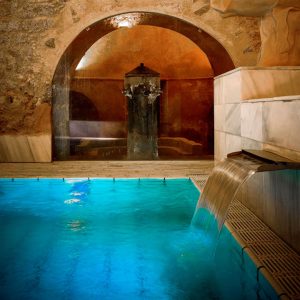Climbing and High Mountain Trails
Portada » Climbing and High Mountain Trails
My name is Eduardo Mostazo Gracia. I live in Hervás, in the Ambroz Valley, at the foot of the snow-capped mountains, above the Tierras de Granadilla. I work as a mountain guide and lead other outdoor activities with the company Origen, Deporte y Naturaleza. I wanted to share with you some stories about the mountains in my region and neighbourhood, although there are so many hidden corners, so much history, and so much written in the landscape that I hardly know where to begin.
I was attracted to the mountains from a young age. The feeling I would get when I was up there, admiring the landscape like a great bird of prey soaring above it all, as if the more mundane issues belonged only to the lowlands, the plains, the dehesas. Not that the lowlands aren’t spectacular, beautiful, and comforting. It’s just that everything is amplified up in the mountains – the shapes, the views, the rock formations, the gorges, and their plant and animal life – making them truly impressive.
I remember as a child having fun at summer camp in Hervás like so many others. I looked up at these peaks – what we now call the “skyline” – that line where the summit meets the horizon. Specifically, I noticed the rocky outcrops of Valdeamor and Canchal de la Gallina.
I was not even 10 years old but I still remember it fondly, just like the weekends spent along the shores of the Gabriel y Galán Reservoir or swimming in the natural pools. Who would have thought that I would one day climb up to those very peaks or that I’d eventually guide people and groups to the summit or accompany them on a canoe ride down the Alagón River?
It would still be a few years from the time of that summer camp before I would climb all the neighbouring peaks of the Montes de Tras la Sierra, which separate this region from the Jerte Valley: the demanding Pinajarro, at 2,099 metres, a towering sentinel over the Ambroz Valley; the Nijarra, which appears as Canchal de la Portilla del Arenal on maps, just over 100 metres higher but seemingly so far away; Tras la Sierra Peak, modest in name but impressive at 1,916 metres; the various Camocho peaks at an elevation of around 1,800 metres, scattered across Hervás near the Portilla de Jerte and the road to Valdeamor; or the ones to the south, near Casas del Monte and Segura de Toro, where the elevations drop to barely 1,500 metres at peaks like Cerbunal, La Gama, or Risco del Fraile; and finally descending to Pitolero, at 1,350 metres, where the Montes de Tras la Sierra abruptly give way to the vast dehesas and open lands of Cabezabellosa.
But there’s more to life than high peaks. There are also unique spots on the slopes and lower hills, such as the Cerro del Búho in Cabezabellosa, with its ancient castro (fortified settlement), hermitage, and overlook; the nearby rocky outcrops where we teach climbing; and the Piedras Labradas Plain, with the remains of a Roman temple. To the north, we find the beautiful views of the mountains, valley, and glacial features from La Muela or La Cruz de Jeromo. To the west, beyond a few Salamanca peaks, we return to Tierras de Granadilla, crowned by the remote and challenging Calama, perfect for mountain biking. And if we were to paddle across the Alagón River to the other side, we could climb up the mountain again from La Pesga to Pico Blanco, Romero, or Culebro, each one with a story behind its name. If you’ve got any energy left, the Sierra de Santa Bárbara in Marchagaz awaits – a veritable botanical island.
These are all beautiful natural vantage points that should not be overlooked, especially in the high mountains, where the silence of the now-absent goats lingers, along with the timeless stories of their herders.
Eduardo Mostazo Gracia
Origen Deporte y Naturaleza
Visit more posts of the Blog
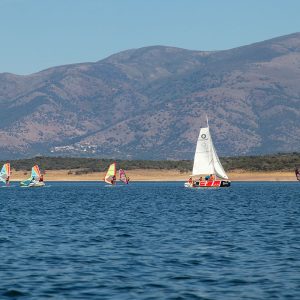
How to Navigate the Reservoirs of Cáceres
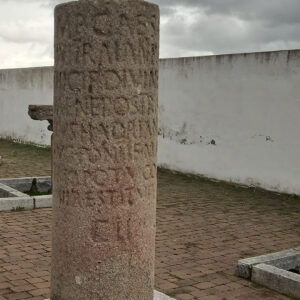
The Vía de la Plata Roman Road through the Caparra Mountains
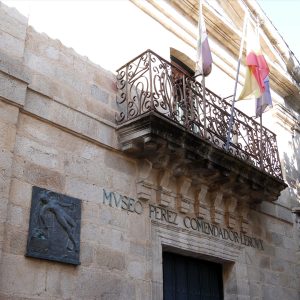
Perez Comendador-Leroux Museum
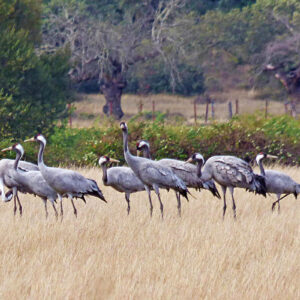
Diverse Birdlife in Ambroz-Cáparra

The Vía de la Plata Roman Road through Ambroz-Cáparra
